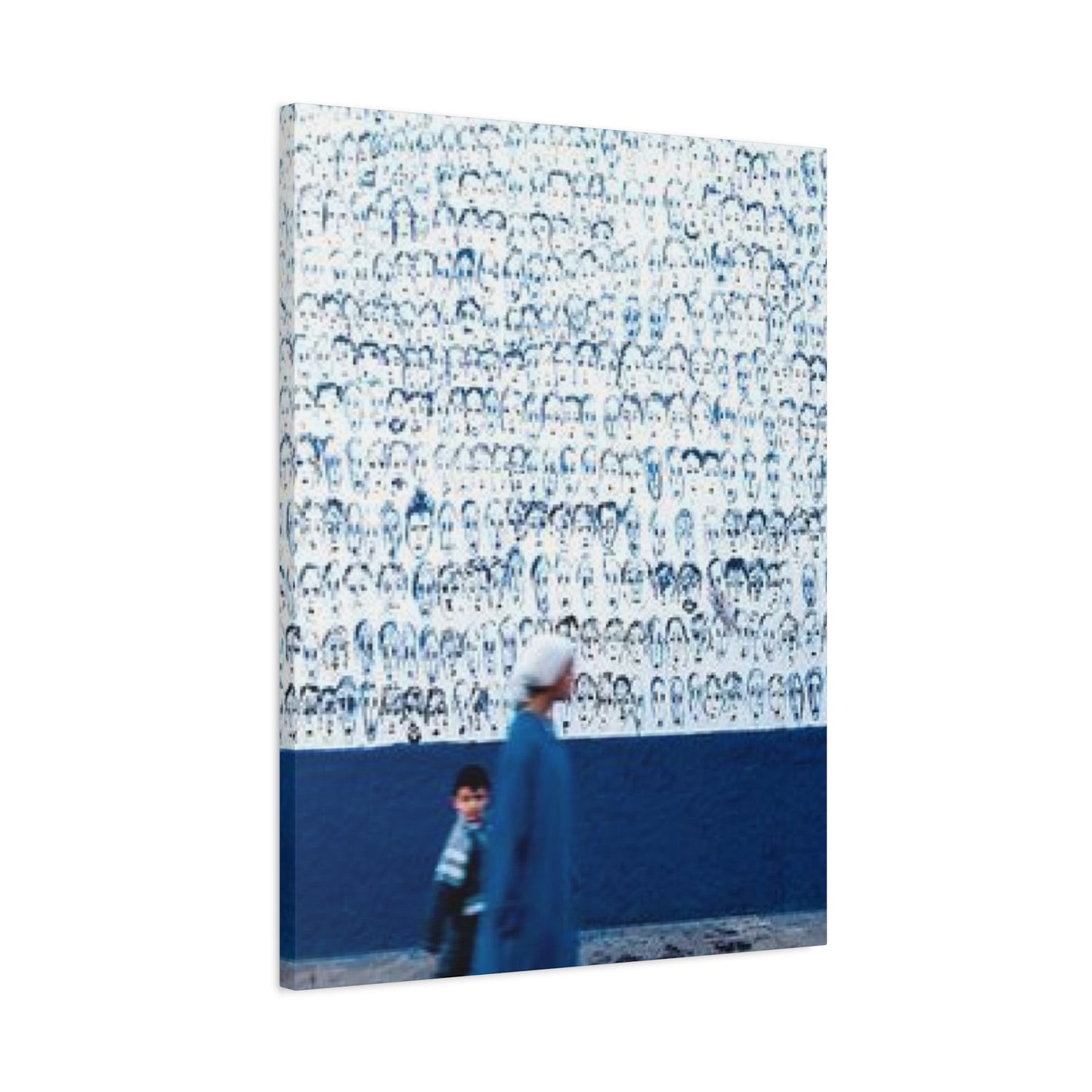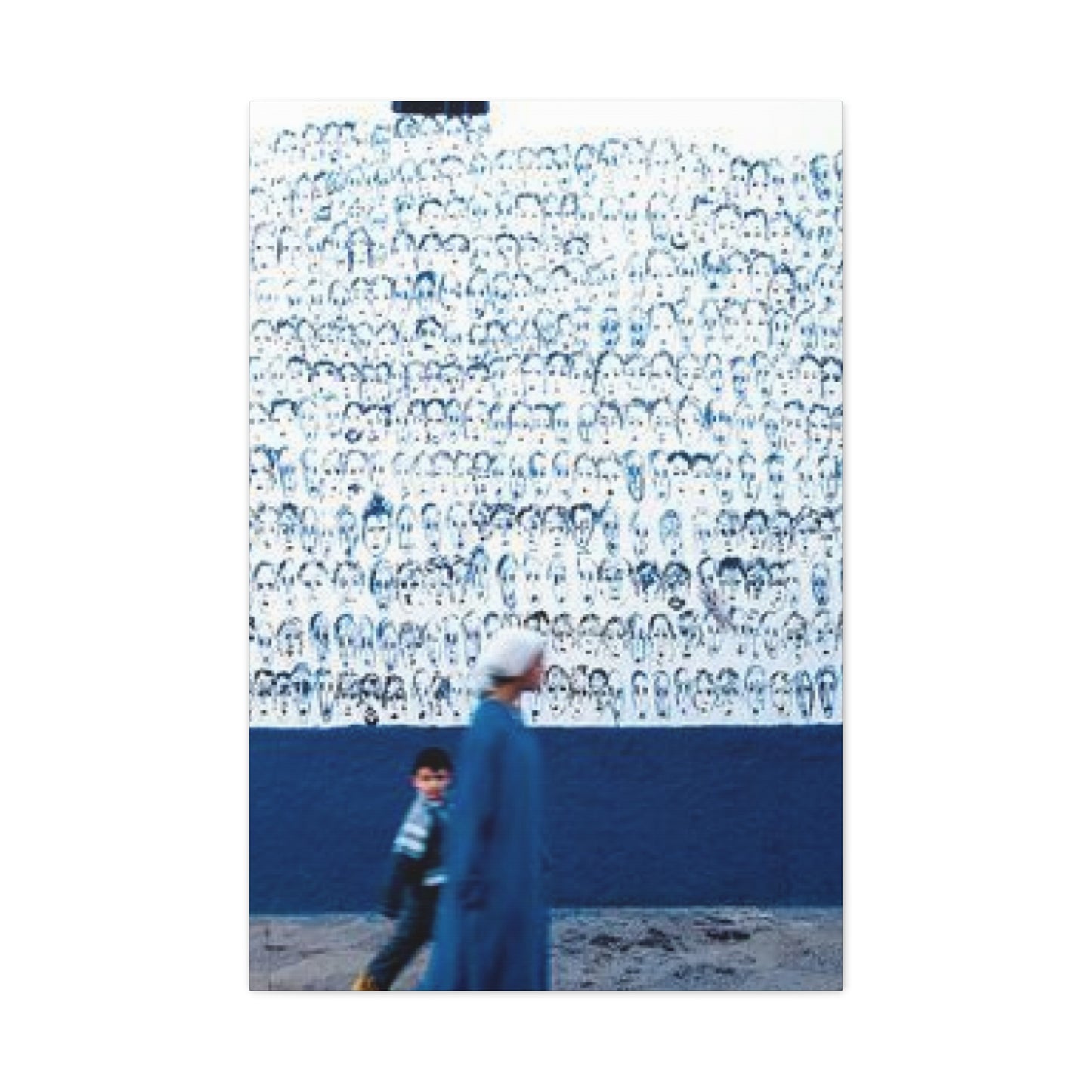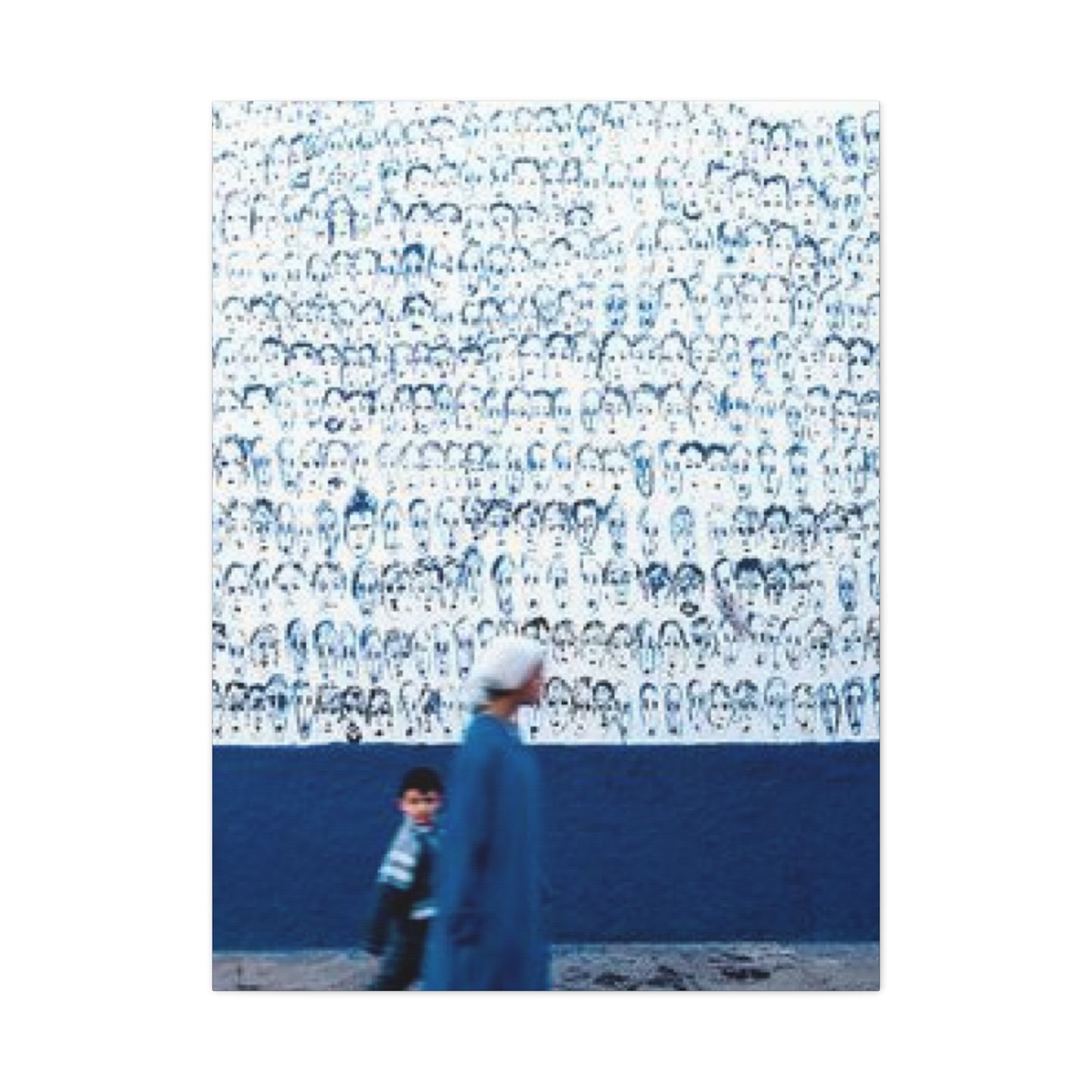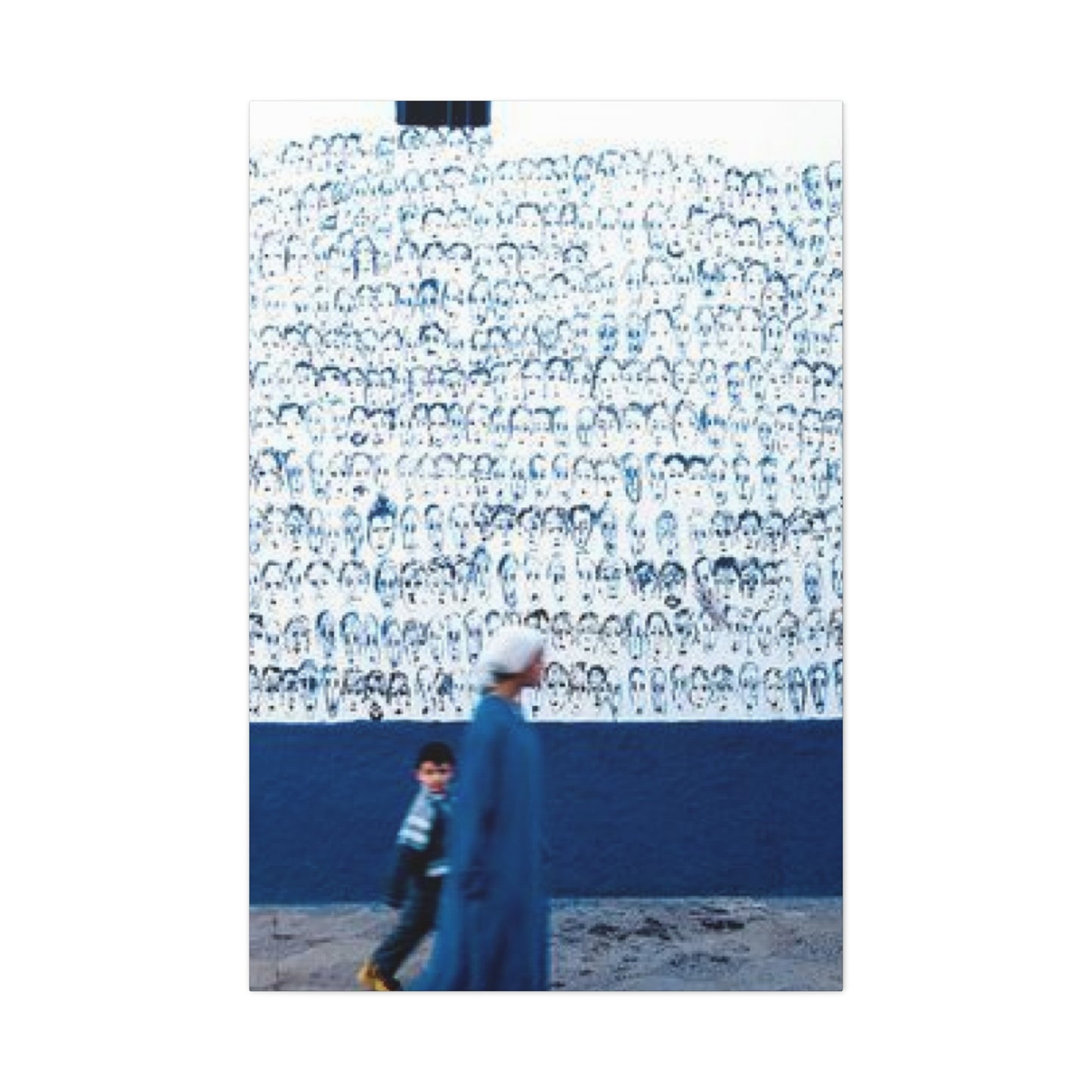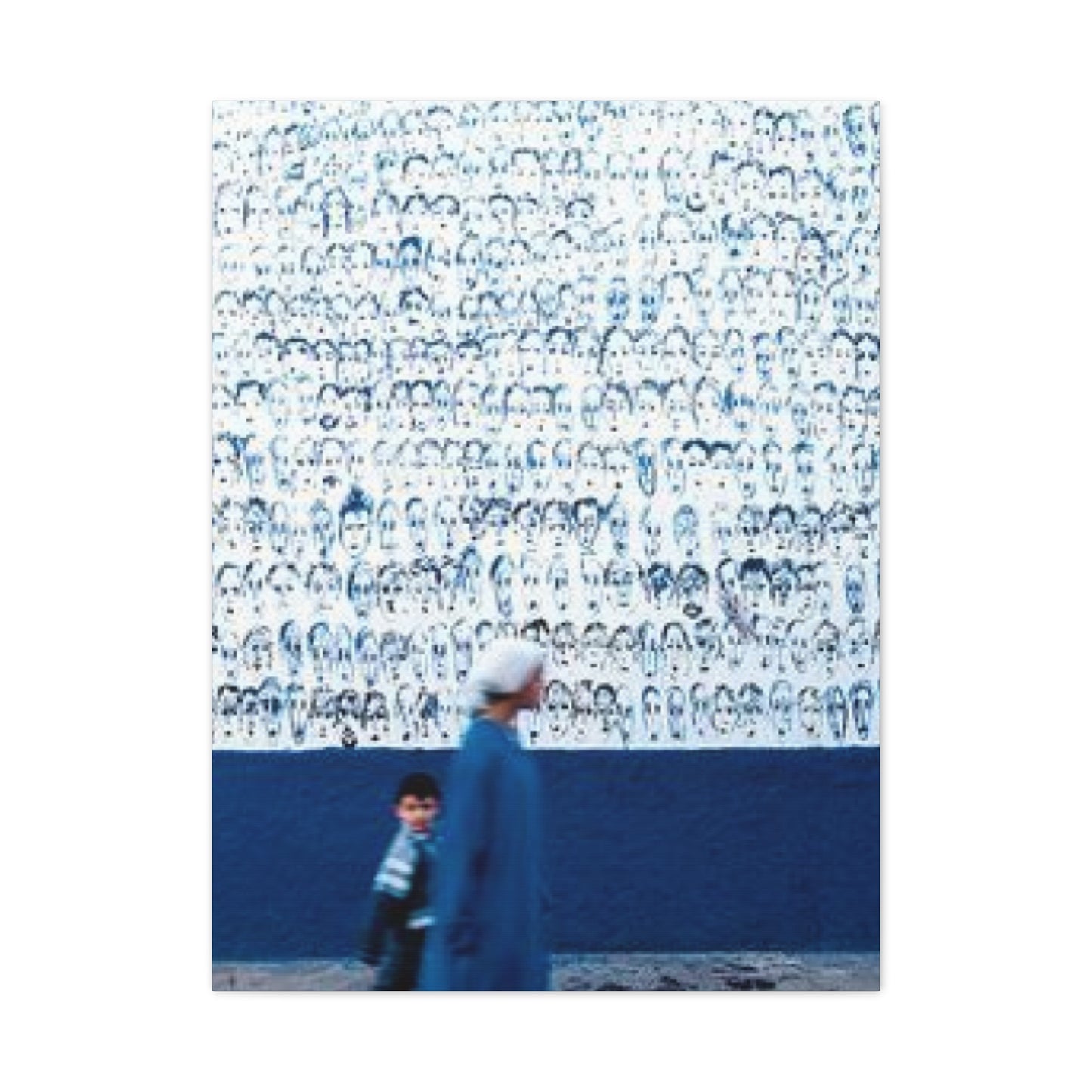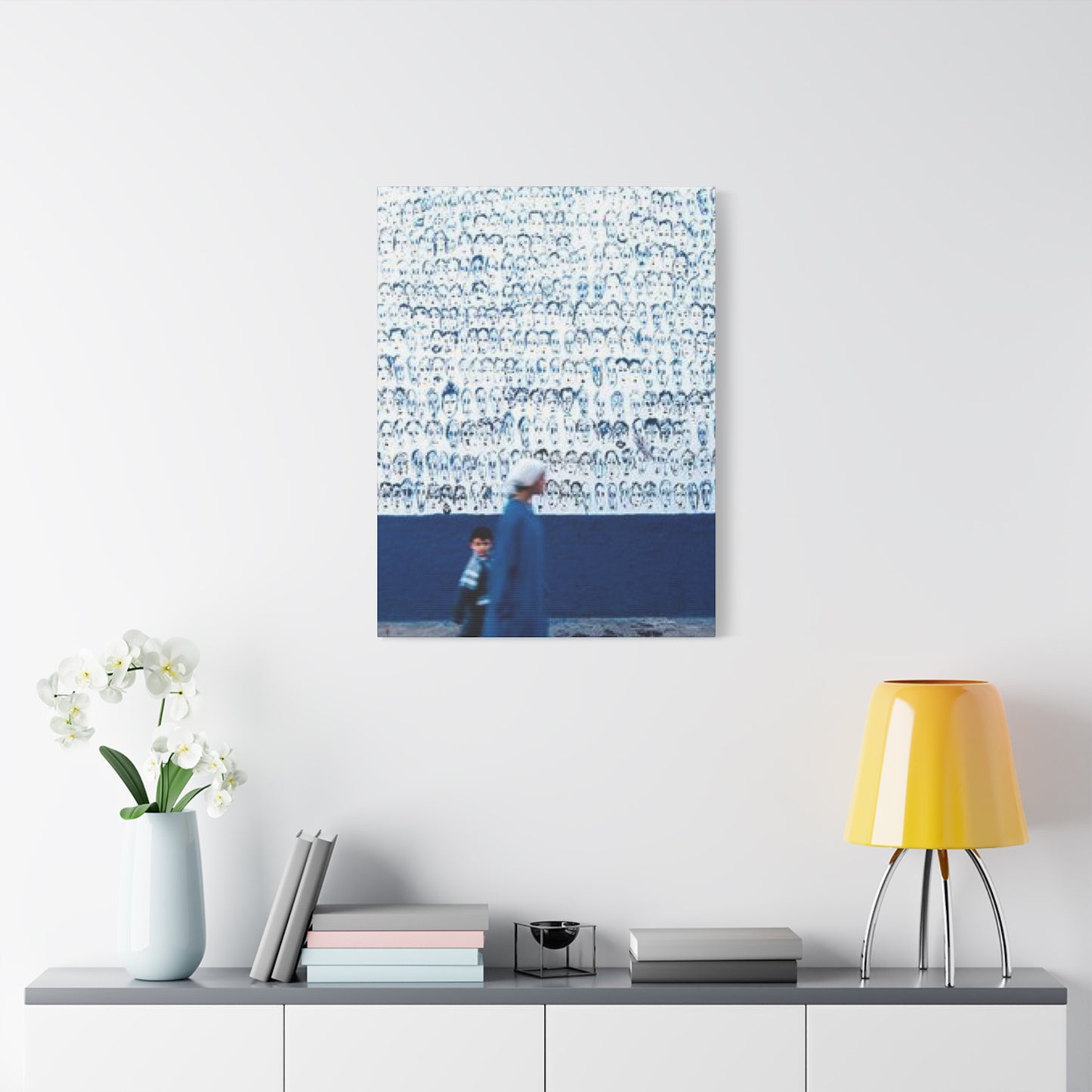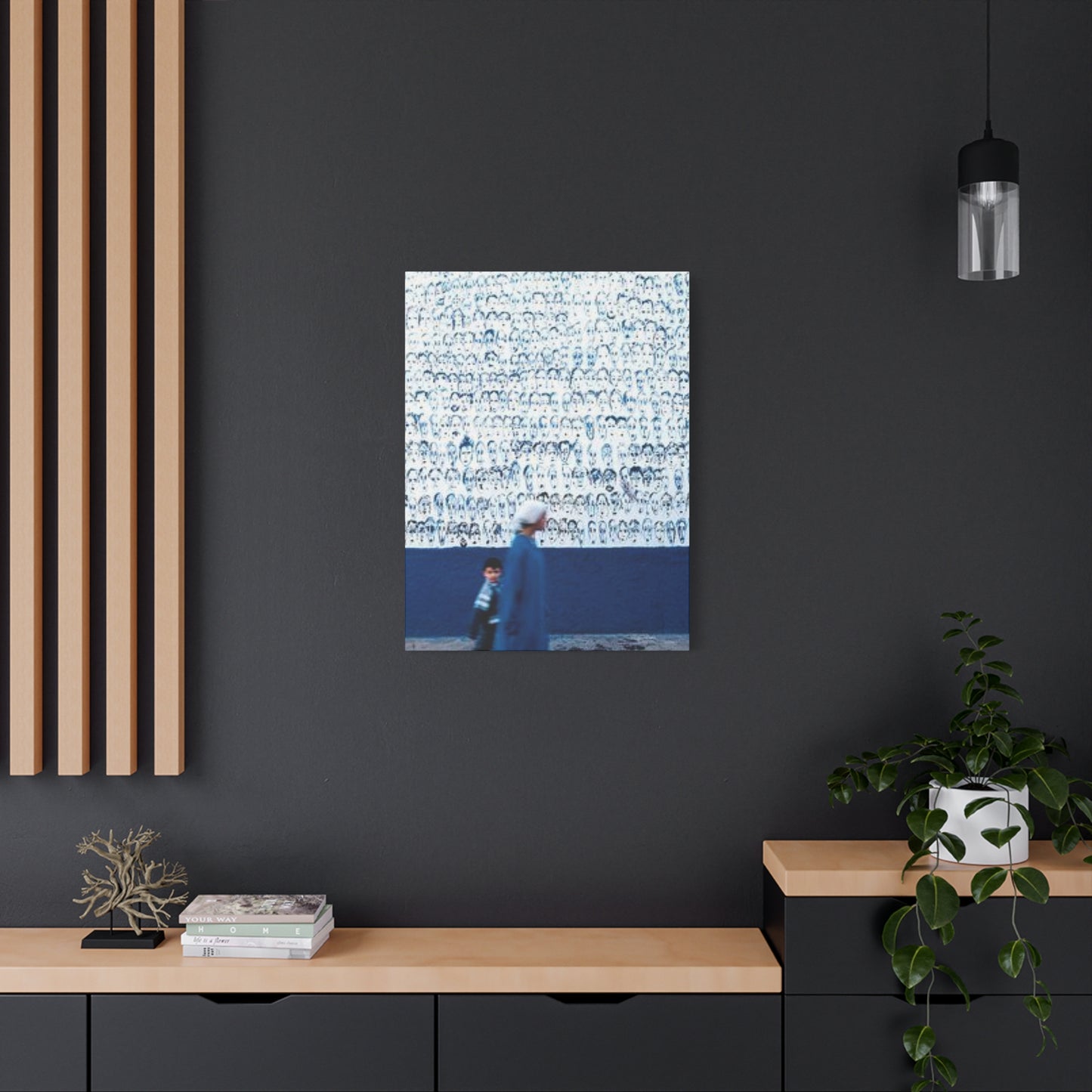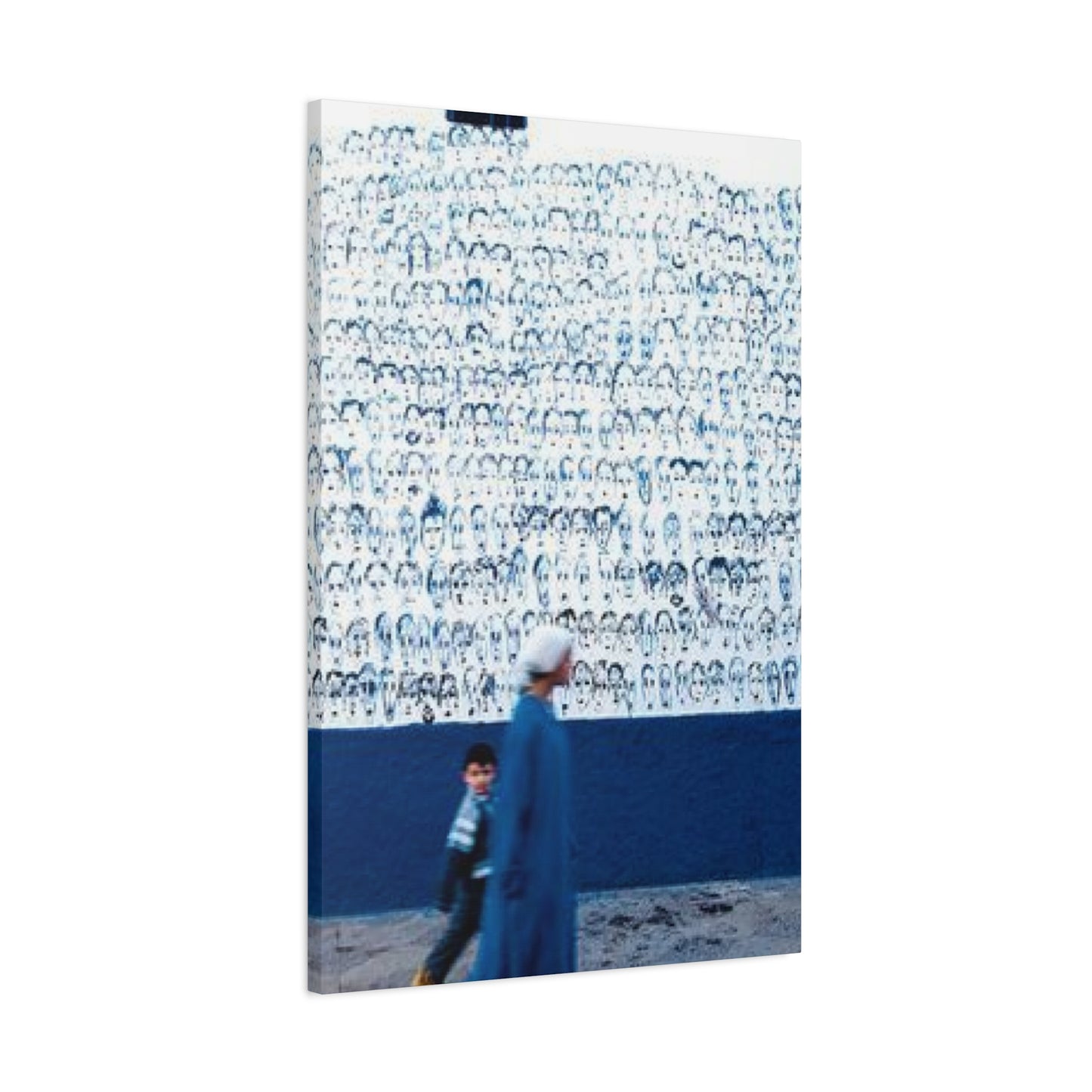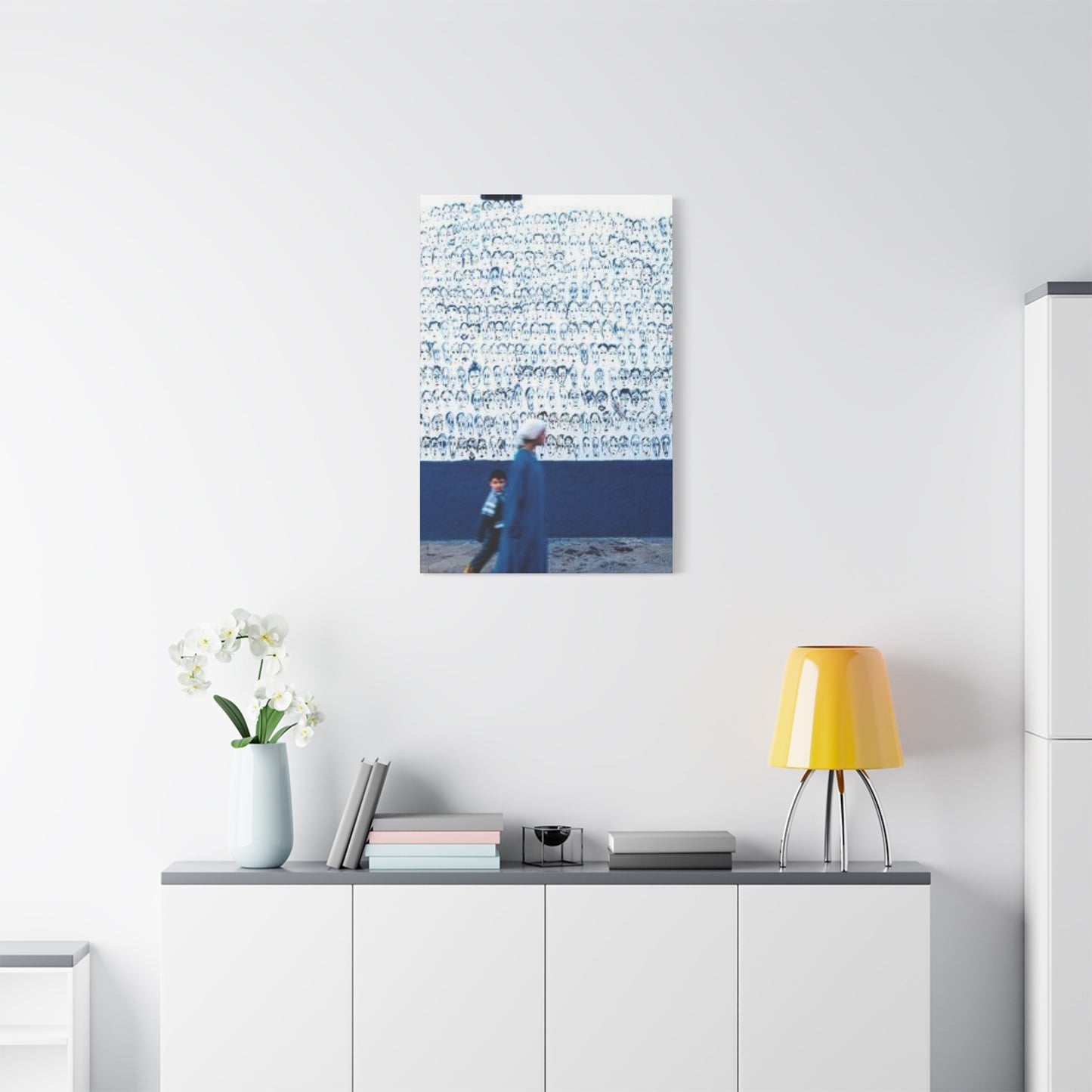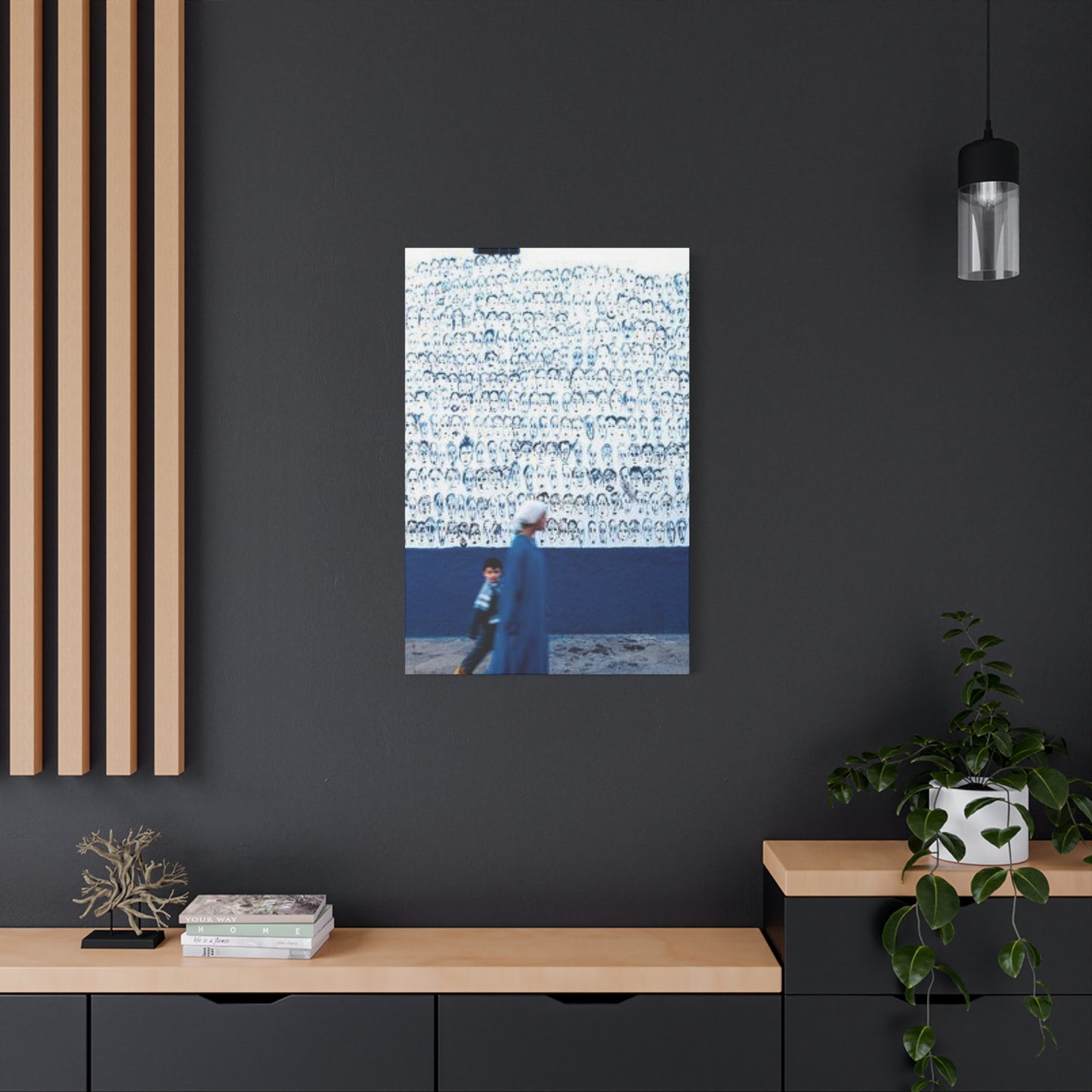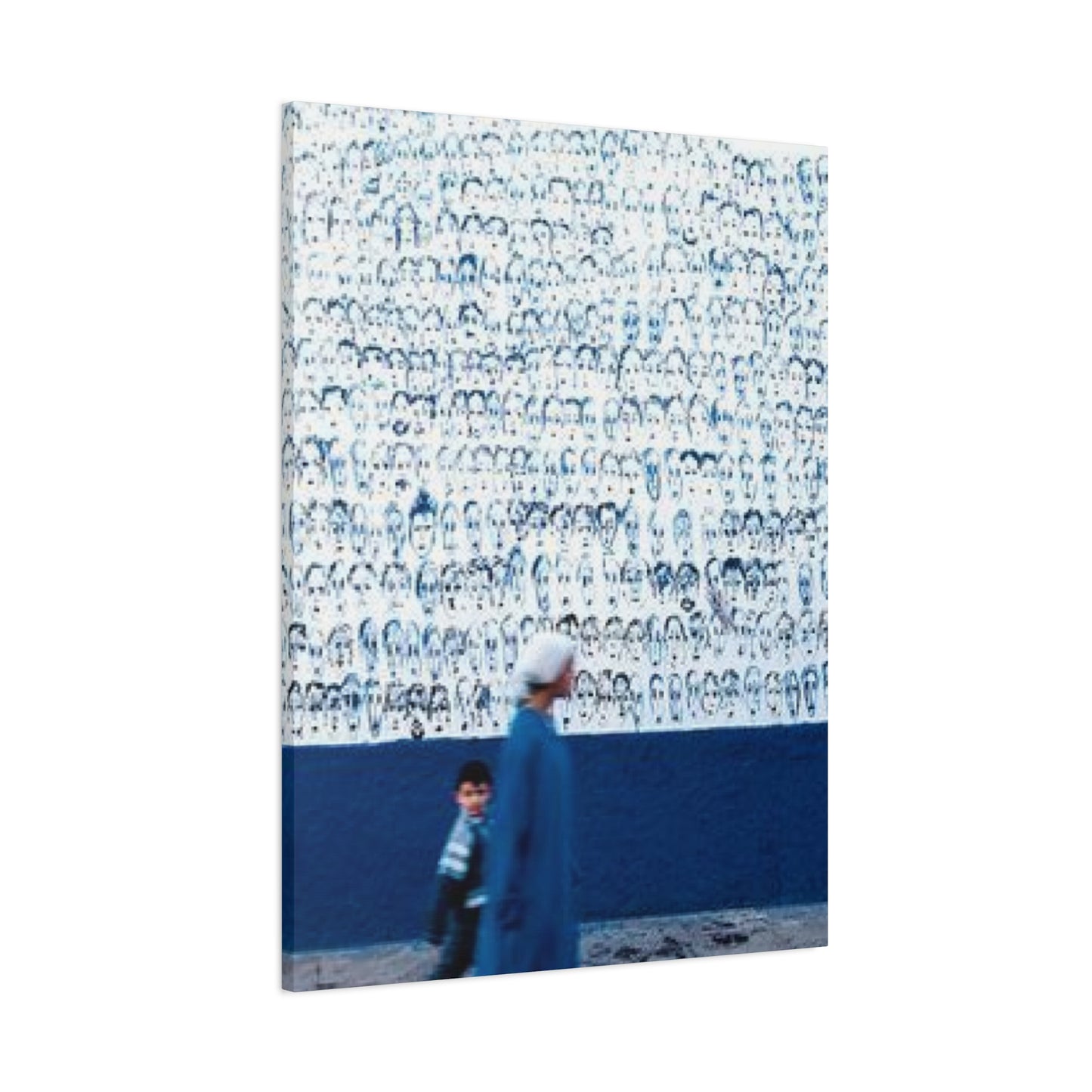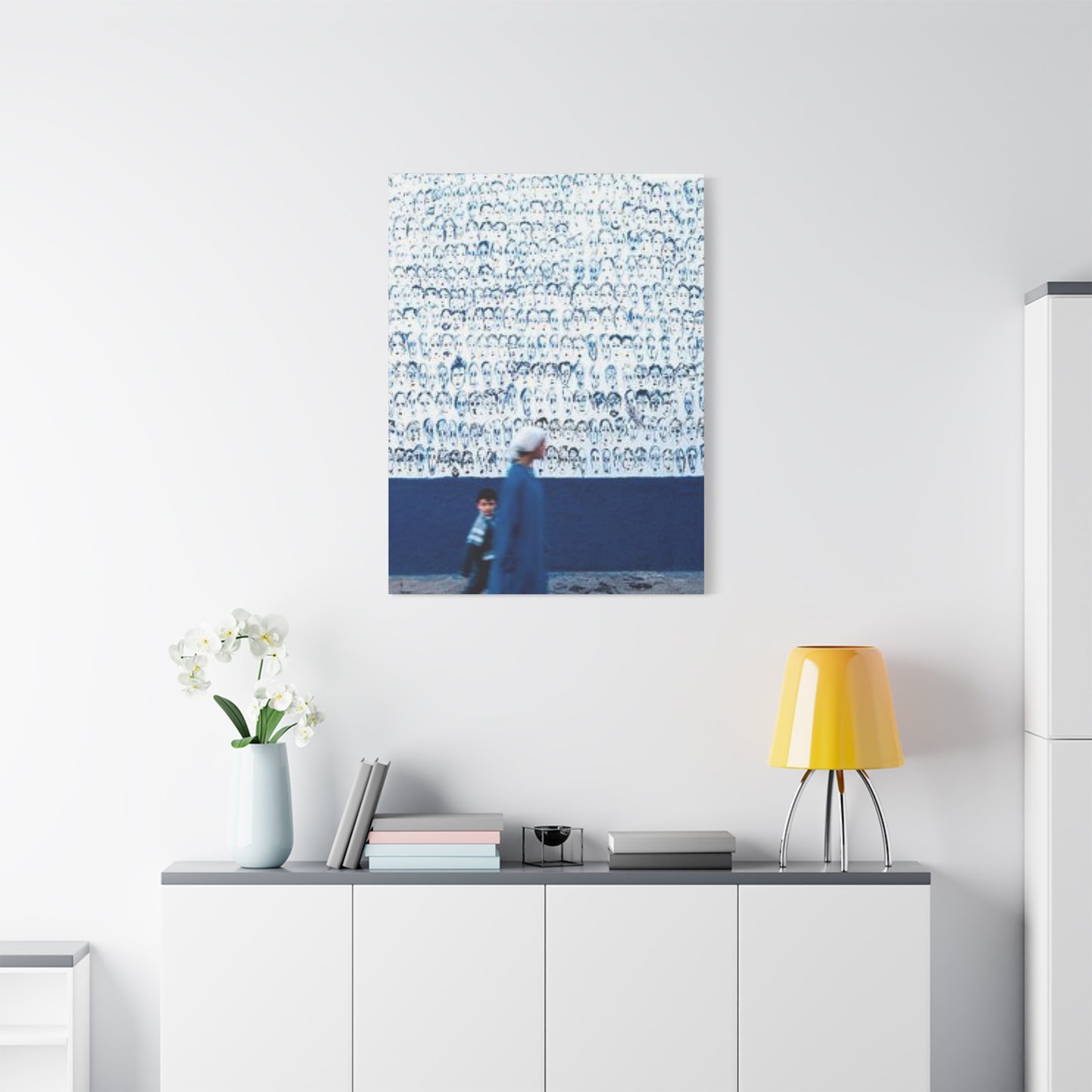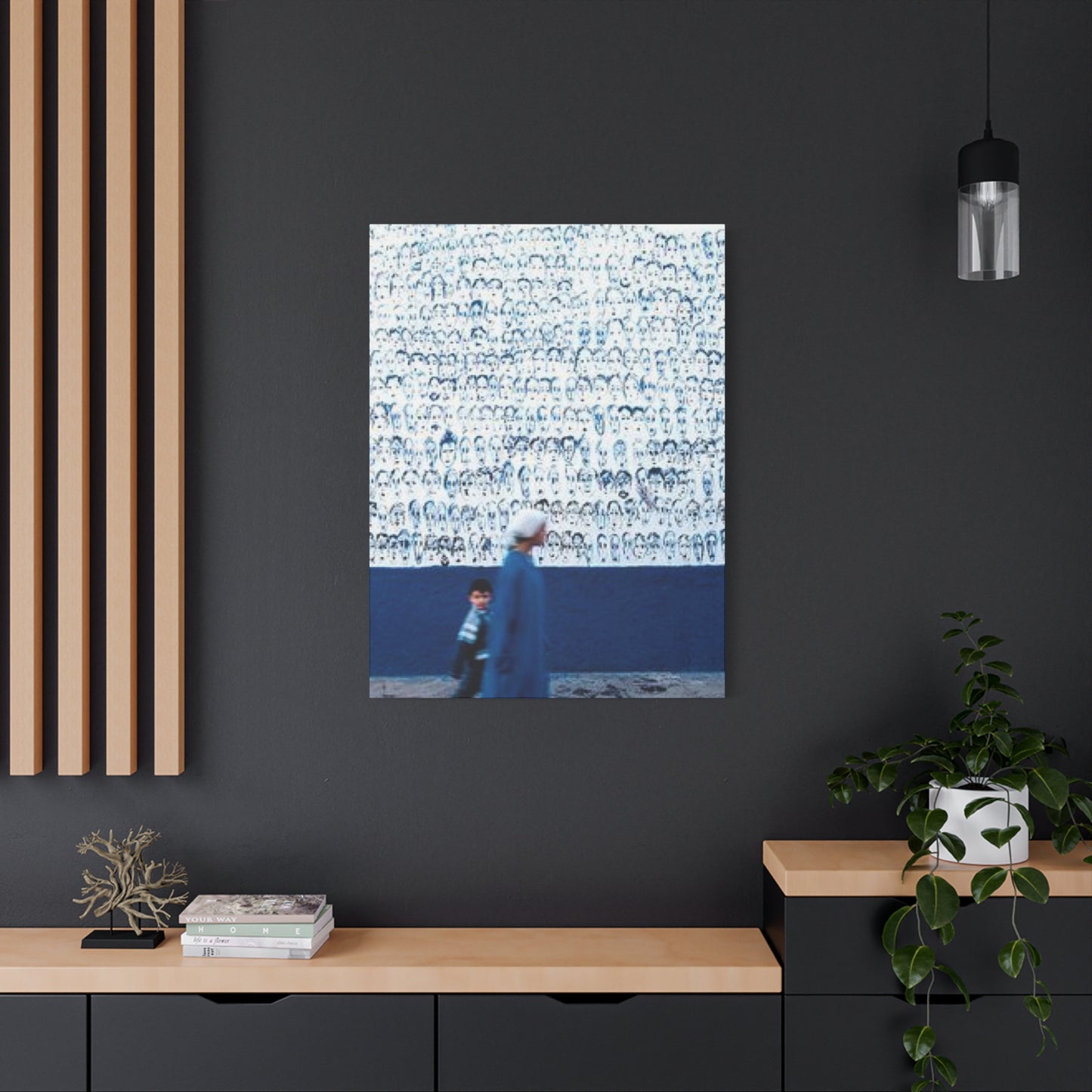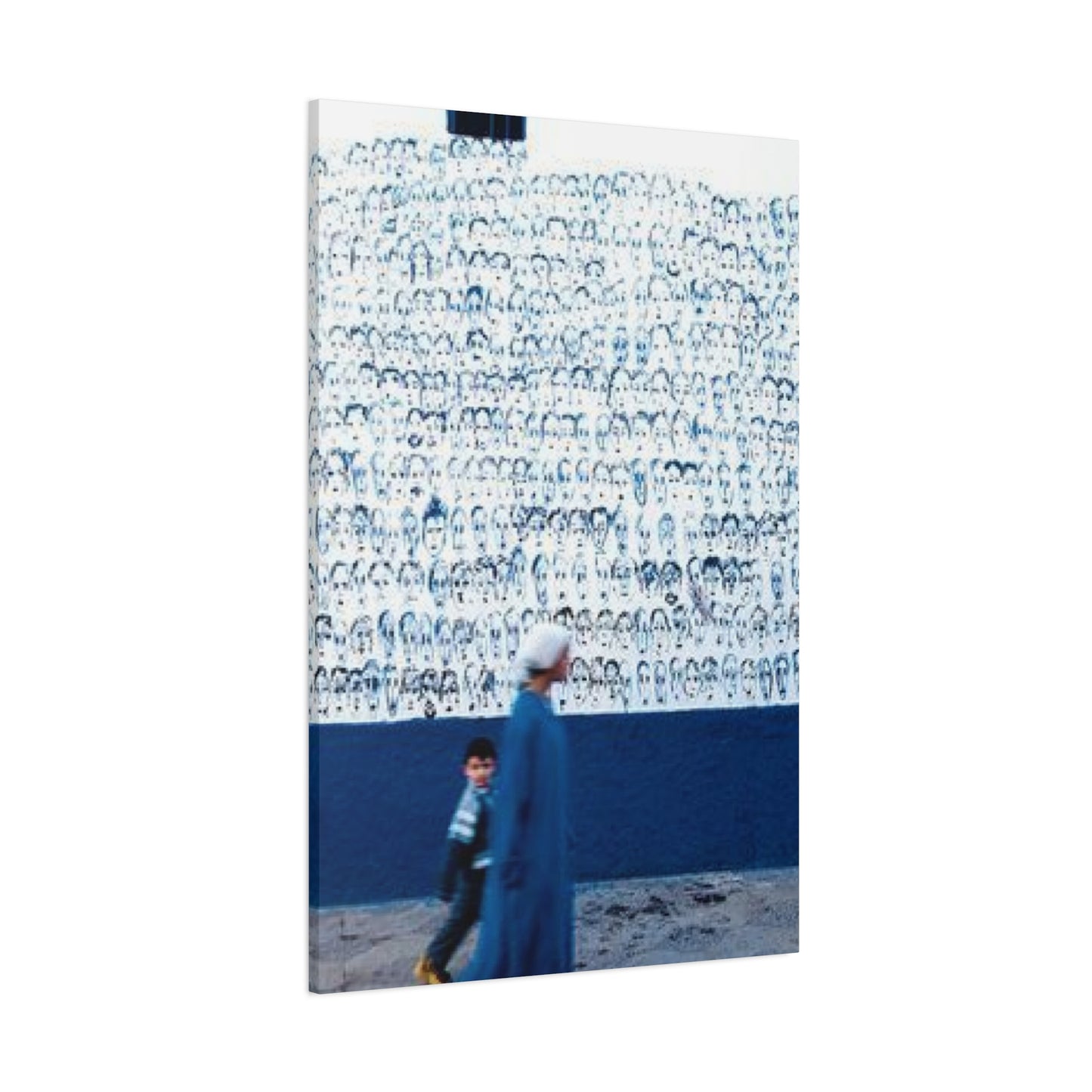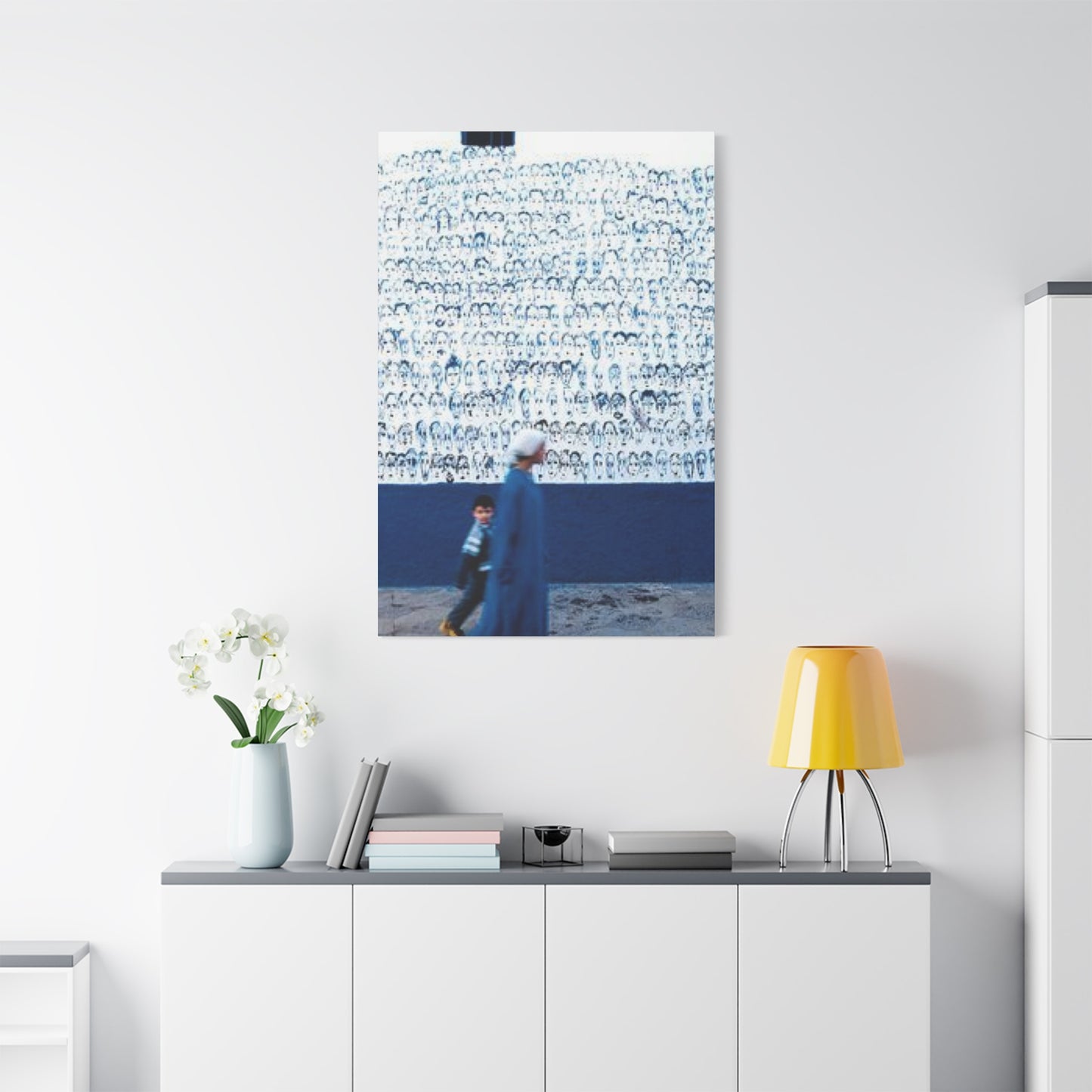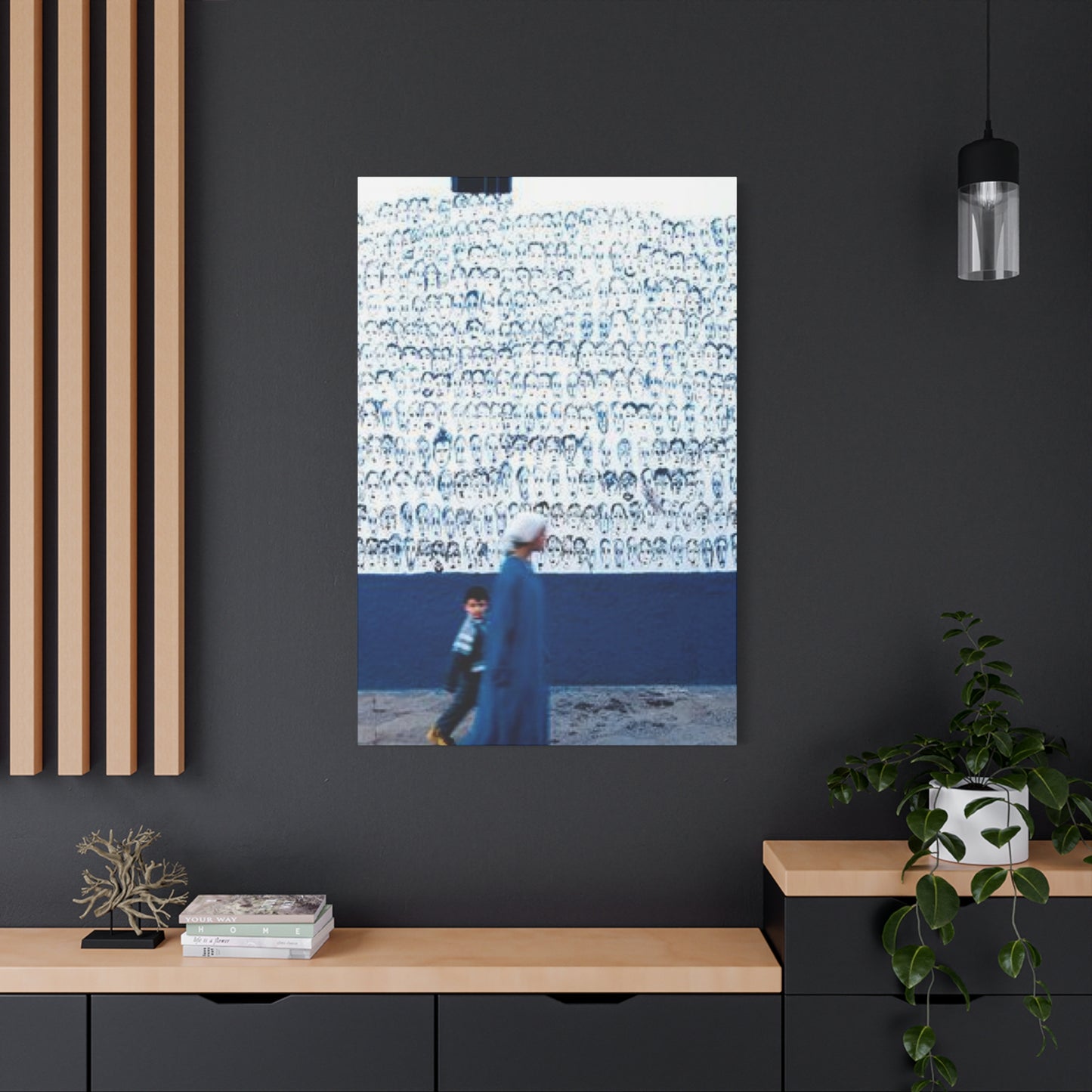Bringing Moroccan Magic into Kids’ Spaces: Child-Friendly Wall Art Ideas
The enchanting world of North African artistic traditions has captured the imagination of interior design enthusiasts worldwide, particularly through the mesmerizing azure-toned portraits that celebrate familial bonds and cultural heritage. These stunning visual narratives transcend mere decoration, offering homeowners an opportunity to infuse their living spaces with profound emotional depth and cultural significance. The rich tapestry of Moroccan artistic expression, characterized by its distinctive cobalt and indigo palettes, creates an atmosphere of tranquility while honoring the sacred bonds between generations.
Contemporary interior designers increasingly recognize the transformative power of these culturally rich artworks, which seamlessly blend traditional techniques with modern aesthetic sensibilities. The azure hues that dominate these pieces evoke feelings of serenity, wisdom, and spiritual connection, making them ideal focal points for creating harmonious living environments. Each brushstroke tells a story of resilience, love, and cultural continuity, inviting viewers to contemplate the universal themes of family, protection, and nurturing that transcend geographical boundaries.
The artistic legacy of Morocco encompasses centuries of cultural exchange, resulting in a unique visual language that speaks to both the heart and the soul. These portraits, often depicting women and children in various states of daily life, prayer, or celebration, serve as windows into a rich cultural heritage that values family unity and spiritual devotion. The predominant use of blue tones in these works is not merely aesthetic but carries deep symbolic meaning, representing protection, infinity, and the divine feminine principle that guides family life.
Modern collectors and interior design professionals appreciate how these artworks bridge the gap between traditional craftsmanship and contemporary artistic expression. The careful attention to detail, from the flowing lines of traditional garments to the expressive eyes that convey deep emotion, demonstrates the artist's commitment to preserving cultural authenticity while creating pieces that resonate with modern sensibilities. The result is artwork that feels both timeless and contemporary, capable of enhancing any interior design scheme while maintaining its cultural integrity.
The growing popularity of Moroccan-inspired family portraits in interior design reflects a broader trend toward meaningful decoration that goes beyond superficial aesthetics. Homeowners are increasingly seeking artwork that tells a story, reflects their values, and creates emotional connections within their living spaces. These azure-toned masterpieces fulfill these desires by offering visual narratives that celebrate the universal human experiences of love, protection, and cultural identity.
Professional interior designers often recommend incorporating these pieces as statement walls or focal points in living rooms, bedrooms, or meditation spaces where their calming influence can be fully appreciated. The versatility of the azure color palette allows these artworks to complement a wide range of interior design styles, from minimalist contemporary to eclectic bohemian, making them accessible to diverse aesthetic preferences while maintaining their cultural significance.
The emotional resonance of these portraits extends beyond their visual appeal, as they often serve as daily reminders of the importance of family bonds and cultural heritage. Many collectors report that these pieces inspire reflection on their own family relationships and cultural connections, creating a sense of grounding and belonging within their homes. This transformative quality distinguishes these artworks from purely decorative pieces, elevating them to the status of meaningful cultural artifacts that enrich daily life.
Sacred Symbolism and Cultural Significance
The profound symbolism embedded within Moroccan family portraits extends far beyond their aesthetic appeal, representing a complex tapestry of cultural beliefs, spiritual traditions, and social values that have been preserved through generations of artistic expression. The predominant azure coloration in these works carries deep metaphysical significance, rooted in ancient Berber traditions that associate blue tones with protection against evil influences and the channeling of divine blessings upon families and communities.
Traditional Moroccan culture places immense value on the concept of baraka, or divine blessing, which is believed to flow through family lineages and is often depicted through the serene expressions and protective gestures found in these artistic representations. The women portrayed in these works frequently embody the role of spiritual guardians, their presence serving as a conduit for ancestral wisdom and divine protection. This spiritual dimension transforms each portrait into a talisman of sorts, imbuing living spaces with positive energy and protective influences.
The artistic tradition of depicting mothers with their children reflects the central role of maternal figures in Moroccan society, where women are revered as the keepers of cultural traditions, family values, and spiritual practices. These portraits often capture intimate moments of care, instruction, or blessing, highlighting the sacred nature of the mother-child relationship within the broader context of Islamic and Berber cultural frameworks. The careful attention to details such as traditional jewelry, henna patterns, and clothing reflects the artist's commitment to preserving these cultural markers for future generations.
The use of indigo and cobalt pigments in these works connects to ancient dyeing traditions that have been practiced in Morocco for centuries, particularly in regions known for their textile production. These natural colorants were historically expensive and difficult to obtain, making blue-toned artworks symbols of prosperity and cultural sophistication. Contemporary artists working in this tradition honor these historical associations while making their works accessible to modern collectors who appreciate both the aesthetic beauty and cultural significance of these pigments.
Geometric patterns and architectural elements that frequently appear as background details in these portraits serve multiple symbolic functions, representing the harmony between human life and divine order. These patterns, derived from Islamic artistic traditions, create visual rhythms that complement the organic forms of the human figures while reinforcing themes of spiritual connection and cosmic harmony. The careful balance between figurative and geometric elements reflects the sophisticated artistic philosophy that underlies traditional Moroccan visual culture.
The positioning and gestures of figures within these compositions often carry specific cultural meanings, with protective gestures, prayer positions, and nurturing actions serving as visual metaphors for spiritual concepts and social values. Children in these portraits frequently appear in positions that suggest learning, protection, or blessing, reflecting the importance of intergenerational knowledge transfer and the sacred responsibility of parents to guide their children's spiritual and cultural development.
Contemporary interpretations of these traditional themes allow modern artists to explore universal concepts of family, protection, and spiritual connection while honoring the cultural specificity of Moroccan artistic traditions. This balance between cultural authenticity and contemporary relevance makes these works particularly appealing to collectors who seek meaningful artwork that transcends temporal and geographical boundaries while maintaining its cultural integrity and spiritual significance.
The healing and meditative qualities attributed to these azure-toned portraits reflect broader cultural beliefs about the therapeutic power of visual art and spiritual imagery. Many collectors report experiencing a sense of calm and emotional centering when viewing these works, suggesting that their symbolic content continues to resonate on both conscious and subconscious levels, creating environments that support emotional well-being and spiritual reflection.
Artistic Techniques and Traditional Methods in Contemporary Practice
The masterful execution of azure-toned Moroccan family portraits represents a sophisticated synthesis of traditional artistic techniques and contemporary creative expression, showcasing the enduring relevance of time-honored methods while adapting to modern materials and aesthetic sensibilities. Artists working in this tradition employ layered painting techniques that build depth and luminosity through careful color modulation, creating the ethereal quality that characterizes the most compelling examples of this art form.
The preparation of azure pigments follows traditional methods that have been refined over centuries, utilizing natural minerals and plant-based colorants that produce the distinctive hues associated with authentic Moroccan artistic expression. Contemporary artists often blend these traditional materials with modern mediums to achieve optimal permanence and color stability, ensuring that their works will maintain their visual impact for generations. This careful attention to material quality reflects the deep respect these artists hold for their cultural heritage and their commitment to creating lasting artistic legacies.
Brush techniques employed in these works demonstrate the influence of both Arabic calligraphy and traditional textile design, with flowing strokes that echo the rhythmic patterns found in woven fabrics and architectural decoration. The development of these skills requires years of practice and study, as artists must master not only technical execution but also the cultural and spiritual significance of the visual elements they incorporate into their compositions. This comprehensive approach to artistic education ensures that contemporary works maintain their cultural authenticity while achieving high aesthetic standards.
The portrayal of human figures in these works requires particular sensitivity to cultural norms and artistic traditions that govern the representation of the human form within Islamic artistic contexts. Artists must balance realistic depiction with stylistic conventions that respect religious and cultural sensitivities while creating emotionally resonant images that speak to universal human experiences. This delicate balance demonstrates the sophisticated artistic philosophy that underlies traditional Moroccan visual culture.
Color theory plays a crucial role in the creation of these works, as artists must understand not only the technical aspects of pigment behavior but also the cultural and psychological associations of different hues within their target cultural context. The dominance of azure tones requires particularly careful modulation to avoid monotony while maintaining the spiritual and emotional impact that makes these works so compelling. Master artists achieve this through subtle variations in tone, texture, and opacity that create visual interest without compromising the overall harmony of the composition.
Contemporary artists working in this tradition often incorporate mixed media techniques that allow them to achieve greater textural variety and visual complexity while maintaining the essential character of traditional Moroccan artistic expression. These innovations might include the use of gold leaf, textured painting surfaces, or digital enhancement techniques that complement rather than replace traditional painting methods. Such approaches demonstrate the dynamic nature of cultural traditions that evolve while maintaining their core identity.
The study of light and shadow in these portraits reflects both Western artistic influence and traditional Islamic approaches to representing divine illumination through artistic means. Artists must master the subtle interplay of light and form that gives these figures their spiritual presence while maintaining the flattened perspective that characterizes much traditional Islamic art. This synthesis of different artistic traditions creates works that appeal to diverse audiences while maintaining their cultural specificity.
Quality control and artistic standards within this tradition are maintained through mentorship systems and artistic communities that preserve traditional knowledge while encouraging innovation and personal expression. Established artists take responsibility for training newer practitioners, ensuring that technical skills and cultural understanding are transmitted to future generations. This collaborative approach to artistic development creates a supportive environment for creative exploration while maintaining the integrity of the tradition.
Contemporary Interior Design Integration and Aesthetic Harmony
The successful integration of azure-toned Moroccan family portraits into contemporary interior design schemes requires careful consideration of color relationships, spatial composition, and cultural sensitivity to create harmonious environments that honor both artistic tradition and modern living requirements. Professional interior designers increasingly recognize these works as powerful focal points capable of transforming mundane spaces into emotionally resonant environments that reflect the homeowner's appreciation for cultural depth and artistic excellence.
Color coordination strategies for incorporating these azure-dominated artworks involve understanding the complex relationships between blue tones and other colors commonly found in contemporary interior design palettes. Complementary colors such as warm oranges and soft corals can create dynamic visual tension that enhances the impact of the blue tones while maintaining overall harmony. Analogous color schemes incorporating various blues, greens, and purples can create serene, monochromatic environments that emphasize the meditative qualities of these artistic works.
Lighting considerations play a crucial role in showcasing these portraits effectively, as the luminous quality of azure pigments requires careful illumination to achieve optimal visual impact. Natural light from north-facing windows provides ideal conditions for viewing these works, while artificial lighting systems must be carefully calibrated to avoid color distortion or excessive glare that might diminish the viewing experience. LED lighting systems with adjustable color temperature allow for fine-tuning that can enhance different aspects of the artwork throughout the day.
Scale and proportion relationships between these artworks and their surrounding environments require thoughtful planning to achieve proper visual balance and emotional impact. Large-scale portraits work best as statement pieces in spacious rooms where viewers can appreciate their full emotional and artistic impact from appropriate viewing distances. Smaller works might be grouped in series or combined with complementary decorative elements to create visually cohesive arrangements that maintain their individual significance while contributing to overall design themes.
Furniture selection and arrangement around these artworks should complement rather than compete with their visual and emotional impact, utilizing pieces that echo the cultural themes or color palettes found in the portraits while maintaining functional requirements for modern living. Traditional Moroccan furniture pieces can create authentic cultural connections, while contemporary pieces in complementary colors and materials can bridge cultural and temporal gaps effectively.
Textile coordination offers opportunities to extend the cultural themes and color relationships found in these portraits throughout interior spaces, utilizing fabrics that echo traditional Moroccan patterns, colors, or textures while meeting contemporary comfort and durability requirements. Carefully selected rugs, cushions, and window treatments can create layered environments that support and enhance the artistic impact of the portraits while maintaining functional comfort for daily living.
Wall preparation and framing choices significantly impact the presentation and preservation of these artworks, requiring attention to both aesthetic and conservation considerations. Museum-quality framing materials and techniques ensure long-term preservation while appropriate matting and glazing choices can enhance the visual presentation of the works. Wall colors and textures should be selected to complement rather than compete with the artwork, often utilizing neutral tones that allow the azure colors to appear most vibrant and emotionally impactful.
Room function considerations influence the selection and placement of these portraits, as different spaces within homes serve varying purposes and require different emotional atmospheres. Bedrooms and meditation spaces benefit from the calming influence of these works, while living areas might showcase larger, more dramatic pieces that serve as conversation starters and cultural focal points. The spiritual and protective symbolism associated with these works makes them particularly appropriate for family gathering spaces where their positive influences can benefit all occupants.
Professional consultation services can help homeowners navigate the complex decisions involved in selecting and integrating these culturally significant artworks into their living spaces, ensuring that both aesthetic and cultural considerations are properly addressed. These specialists understand both the artistic traditions represented in these works and contemporary design principles, enabling them to create environments that honor both cultural heritage and modern living requirements while achieving optimal visual and emotional impact.
Emotional Resonance and Psychological Impact in Living Spaces
The profound emotional impact of azure-toned Moroccan family portraits extends far beyond their aesthetic appeal, creating psychological environments that support well-being, reflection, and emotional connection within contemporary living spaces. Research in environmental psychology suggests that culturally meaningful artwork can significantly influence mood, stress levels, and overall sense of belonging within domestic environments, making these portraits valuable additions to homes seeking to promote emotional health and family harmony.
The calming influence of blue tones has been extensively documented in psychological literature, with studies indicating that exposure to various shades of blue can reduce anxiety, lower blood pressure, and promote feelings of tranquility and emotional stability. When combined with the nurturing imagery typically found in Moroccan family portraits, these color effects are amplified, creating environments that naturally support relaxation, meditation, and emotional reflection. This makes these artworks particularly valuable for spaces designated for rest, contemplation, or family gathering.
The archetypal imagery of maternal protection and family bonding depicted in these works resonates with universal psychological patterns that transcend cultural boundaries, speaking to fundamental human needs for security, belonging, and emotional connection. Viewers often report experiencing a sense of comfort and emotional grounding when exposed to these images, suggesting that their symbolic content activates deep psychological responses related to safety, nurturing, and family stability. This emotional resonance makes these artworks particularly effective in creating environments that support emotional well-being.
Cultural connection and identity affirmation represent important psychological benefits for viewers who share cultural heritage with the artistic traditions represented in these works. For individuals with Moroccan, North African, or broader Middle Eastern backgrounds, these portraits can serve as daily reminders of cultural identity and family values, helping to maintain emotional connections to ancestral traditions while navigating contemporary life challenges. This cultural grounding can provide psychological stability and identity reinforcement that supports overall mental health.
The contemplative qualities inherent in these artworks encourage mindfulness and present-moment awareness, as viewers are drawn into the serene expressions and protective gestures depicted in the compositions. This meditative influence can help create mental spaces for reflection, stress reduction, and emotional processing, making these works valuable tools for supporting mental health and emotional resilience. Regular exposure to such contemplative imagery can gradually influence thought patterns and emotional responses, promoting greater psychological well-being.
Color therapy principles suggest that the predominant azure tones found in these works can help balance emotional energy and promote psychological healing, particularly for individuals dealing with anxiety, depression, or emotional trauma. The association of blue colors with healing, protection, and spiritual connection creates environments that naturally support recovery and emotional growth. This therapeutic dimension makes these artworks valuable additions to homes where family members are dealing with stress, life transitions, or emotional challenges.
The representation of strong, nurturing female figures in these portraits can provide positive role models and emotional inspiration for viewers of all ages, particularly women and children who may benefit from exposure to images of feminine strength, wisdom, and protective love. These visual representations can reinforce positive self-image and family values while providing emotional support during challenging times. The presence of such imagery in daily living environments can gradually influence self-perception and emotional resilience.
Family bonding and intergenerational connection themes depicted in these works can inspire viewers to reflect on their own family relationships and cultural heritage, potentially strengthening family bonds and cultural identity. The universal nature of parent-child relationships depicted in these portraits creates opportunities for emotional connection and reflection that can benefit family dynamics and communication. This inspirational quality makes these artworks valuable additions to family homes seeking to strengthen emotional connections between generations.
Stress reduction benefits associated with viewing culturally meaningful artwork have been documented in numerous studies, with findings suggesting that exposure to art that resonates with personal values and cultural identity can significantly reduce stress hormones and promote relaxation responses. The combination of calming colors, meaningful imagery, and cultural significance found in these Moroccan portraits creates optimal conditions for stress relief and emotional restoration, making them valuable tools for creating healthier living environments.
Historical Context and Cultural Evolution in Moroccan Artistic Traditions
The rich historical tapestry underlying contemporary azure-toned Moroccan family portraits reflects centuries of cultural exchange, artistic evolution, and the preservation of traditional values through visual expression. Understanding this historical context enhances appreciation for these works while illuminating the complex cultural forces that have shaped their development from ancient Berber traditions through Islamic influence to contemporary artistic expression that speaks to global audiences while maintaining cultural authenticity.
Ancient Berber artistic traditions provide the foundational elements that continue to influence contemporary Moroccan portraiture, including the use of natural pigments, geometric patterns, and symbolic representations of family relationships and spiritual beliefs. These indigenous traditions, which predate Islamic influence in North Africa by centuries, established artistic conventions that emphasized the connection between human life and natural forces, often incorporating protective symbols and color associations that continue to influence modern interpretations of traditional themes.
The Islamic conquest of North Africa in the seventh and eighth centuries introduced new artistic influences that were gradually synthesized with existing Berber traditions to create distinctive Moroccan artistic expressions. Islamic artistic principles, including the emphasis on geometric patterns, calligraphic elements, and the stylized representation of human forms, became integrated with indigenous traditions to create the unique visual language that characterizes authentic Moroccan art. This cultural synthesis demonstrates the dynamic nature of artistic traditions that evolve while maintaining their essential identity.
Medieval Islamic art theory and practice significantly influenced the development of color symbolism and artistic techniques that continue to characterize contemporary Moroccan portraiture. The association of blue colors with divine protection, infinite space, and spiritual transcendence became deeply embedded in artistic traditions throughout the Islamic world, including Morocco, where these symbolic associations were adapted to local cultural contexts and artistic preferences. Understanding these historical influences enhances appreciation for the cultural depth of contemporary works.
Trade route connections between Morocco and other parts of Africa, Europe, and Asia facilitated cultural exchange that enriched local artistic traditions while introducing new materials, techniques, and aesthetic influences. The famous trans-Saharan trade routes brought precious materials including rare pigments and artistic influences from sub-Saharan Africa, while Mediterranean trade connections introduced European and Middle Eastern artistic elements that were selectively incorporated into evolving Moroccan traditions.
Colonial period influences during the French and Spanish protectorates introduced European artistic techniques and aesthetic sensibilities that were gradually integrated with traditional Moroccan approaches to create hybrid forms that maintained cultural authenticity while expanding artistic possibilities. This period of cultural contact, while often traumatic politically, produced artistic innovations that enriched traditional practices without compromising their essential character. Contemporary artists continue to benefit from this expanded palette of technical and aesthetic possibilities.
Independence era artistic revival movements in post-colonial Morocco emphasized the importance of preserving and revitalizing traditional artistic expressions while adapting them to contemporary contexts and global art markets. Government cultural policies and educational initiatives supported the training of new generations of artists who could maintain traditional techniques while developing personal artistic voices that speak to contemporary concerns. This institutional support has been crucial for maintaining the vitality of traditional artistic practices.
Contemporary globalization influences have created new opportunities and challenges for Moroccan artists working in traditional styles, as international interest in culturally authentic artwork has expanded markets while potentially threatening the integrity of traditional practices. Modern artists must navigate between maintaining cultural authenticity and appealing to international audiences, often resulting in innovative approaches that honor tradition while embracing contemporary artistic developments.
Women artists throughout Moroccan history have played crucial roles in maintaining artistic traditions, particularly in areas such as textile production, ceramics, and decorative arts that have influenced the development of contemporary portraiture. The increasing recognition of women's contributions to Moroccan artistic heritage has inspired contemporary female artists to explore themes of feminine identity, family relationships, and cultural preservation in their work, contributing to the evolution of traditional artistic expressions.
Digital age documentation and preservation efforts have created new opportunities for studying and understanding the historical development of Moroccan artistic traditions while making traditional techniques and cultural knowledge more accessible to contemporary artists and global audiences. Online platforms, digital archives, and virtual museum collections have democratized access to cultural knowledge while creating new markets for traditional and contemporary Moroccan artwork.
Technical Mastery and Artistic Innovation in Contemporary Practice
The creation of exceptional azure-toned Moroccan family portraits requires mastery of complex technical skills combined with innovative approaches that honor traditional methods while embracing contemporary artistic possibilities. Contemporary artists working in this tradition must develop comprehensive understanding of pigment chemistry, color theory, and traditional painting techniques while maintaining the cultural sensitivity necessary to create authentic and emotionally resonant works that speak to modern audiences.
Pigment preparation and color mixing techniques form the foundation of authentic Moroccan artistic expression, requiring knowledge of traditional materials and methods that have been refined over centuries of practice. Natural ultramarine, derived from lapis lazuli, remains the gold standard for achieving the deep, luminous blue tones that characterize the finest examples of this art form. Contemporary artists often combine traditional pigments with modern mediums to achieve optimal color permanence and handling characteristics while maintaining the authentic appearance and emotional impact of historically produced works.
Brushwork techniques in Moroccan portraiture reflect the influence of both traditional textile design and Islamic calligraphy, requiring artists to develop fluid, controlled movements that can create both detailed figurative work and flowing decorative elements. The development of these motor skills requires years of practice and often involves studying with master artists who can transmit subtle aspects of technique that cannot be learned from books or videos. This mentorship tradition ensures that technical knowledge is preserved while allowing for individual artistic development.
Surface preparation methods significantly impact the final appearance and longevity of these works, with traditional approaches often involving multiple layers of gesso, sizing, and ground preparation that create optimal conditions for pigment adhesion and color development. Contemporary artists might modify these traditional methods using modern materials that offer improved archival qualities while maintaining the handling characteristics and appearance of traditional surfaces. This balance between innovation and tradition requires careful experimentation and testing to achieve optimal results.
Composition principles governing the arrangement of figures, architectural elements, and decorative patterns reflect sophisticated understanding of visual harmony and cultural symbolism that must be mastered through study of historical examples and contemporary interpretations. The placement of figures within the picture plane, the relationship between positive and negative space, and the integration of decorative elements all follow traditional guidelines that have been developed through centuries of artistic practice. Understanding these principles is essential for creating works that maintain cultural authenticity while achieving contemporary artistic standards.
Layering techniques used to build depth and luminosity in these works often involve multiple transparent and semi-transparent paint applications that create complex color relationships and visual depth. Traditional glazing methods, adapted for contemporary materials and working conditions, allow artists to achieve the ethereal quality that characterizes the most successful examples of this art form. These techniques require patience and skill, as each layer must be carefully applied and properly cured before subsequent layers can be added.
Drawing and design development processes typically begin with careful studies of traditional costume, architectural details, and cultural artifacts that provide authentic reference material for contemporary interpretations. Many artists maintain extensive reference collections including photographs, sketches, and cultural artifacts that inform their work while ensuring cultural accuracy. This research phase is crucial for creating works that honor traditional culture while speaking to contemporary audiences.
Color harmony principles specific to Moroccan artistic traditions must be understood and applied skillfully to create works that maintain traditional aesthetic values while achieving contemporary artistic impact. The relationship between azure tones and complementary colors, the use of neutral tones to support primary color relationships, and the integration of metallic accents all follow traditional guidelines that have been proven effective over centuries of practice. Mastering these color relationships is essential for creating compelling and culturally authentic works.
Quality control standards within the contemporary Moroccan art community help maintain traditional excellence while encouraging innovation and personal expression. Established artists and cultural institutions often serve as arbiters of quality and authenticity, providing feedback and guidance to developing artists while ensuring that traditional standards are maintained. This community-based approach to quality control helps preserve the integrity of the tradition while supporting artistic growth and innovation.
Innovation within tradition represents an ongoing challenge for contemporary artists who must balance respect for cultural heritage with personal artistic vision and contemporary relevance. Successful artists in this tradition often develop signature approaches that honor traditional methods while incorporating personal innovations that enhance emotional impact and contemporary appeal. This balance between tradition and innovation requires deep cultural understanding combined with exceptional artistic skill and sensitivity.
Regional Variations and Stylistic Influences Across Morocco
The diverse geographical and cultural landscape of Morocco has given rise to distinctive regional variations in artistic expression that enrich the contemporary tradition of azure-toned family portraiture while maintaining common cultural themes and symbolic elements. Understanding these regional differences enhances appreciation for the complexity and richness of Moroccan artistic heritage while providing contemporary artists with a broader palette of traditional influences to draw upon in their creative work.
Atlas Mountains artistic traditions reflect the influence of Berber cultural heritage combined with the harsh beauty of mountainous landscapes, often featuring earth tones combined with azure blues that echo both sky and traditional textile colors. Artists from this region frequently incorporate geometric patterns derived from traditional carpet weaving and architectural decoration, creating works that balance figurative representation with abstract decorative elements. The portrayal of family relationships in Atlas Mountain-influenced works often emphasizes themes of resilience, protection, and connection to ancestral traditions.
Coastal region influences from cities such as Casablanca, Rabat, and Tangier reflect centuries of maritime trade and cultural exchange with Europe and other Mediterranean cultures. Artists from these areas often demonstrate more European influence in their figure drawing and composition while maintaining traditional Moroccan color palettes and symbolic elements. The proximity to the ocean often influences color choices, with azure blues taking on associations with water, travel, and cultural exchange rather than purely spiritual or protective meanings.
Saharan region artistic expressions reflect the influence of nomadic cultures and trade route connections with sub-Saharan Africa, often incorporating warmer color palettes that complement azure blues while referencing desert landscapes and traditional textile patterns. The portrayal of family relationships in works influenced by Saharan traditions often emphasizes themes of journey, protection during travel, and the maintenance of cultural identity across vast distances. These works frequently feature distinctive costume details and decorative elements that reflect trans-Saharan cultural connections.
Imperial city traditions from Fez, Meknes, Marrakech, and Rabat reflect the sophistication of court culture and the influence of Islamic artistic academies that flourished in these urban centers. Artists working in these traditions often demonstrate exceptional technical skill and cultural knowledge, creating works that synthesize various regional influences while maintaining the highest standards of artistic excellence. The portrayal of family relationships in imperial city-influenced works often emphasizes themes of cultural refinement, spiritual devotion, and social status.
Rural village artistic expressions often maintain closer connections to ancient Berber traditions while incorporating Islamic influences adapted to local cultural contexts and available materials. These works frequently demonstrate intimate understanding of daily life, family relationships, and community values that provide authentic emotional content for contemporary interpretations. The use of azure blues in rural-influenced works often carries associations with protection, healing, and spiritual blessing that reflect traditional beliefs and practices.
Andalusian influences from the historical presence of Moorish culture in Spain continue to influence Moroccan artistic expression, particularly in regions with strong historical connections to Al-Andalus. These influences often appear in architectural details, decorative patterns, and composition principles that reflect the sophisticated artistic culture that developed during the medieval period of Islamic presence in Iberia. Artists drawing on these influences often create works that demonstrate exceptional refinement and cultural sophistication.
Contemporary urban influences from modern Moroccan cities create new synthesis opportunities as traditional regional styles interact with global artistic movements and contemporary cultural concerns. Young artists often blend elements from multiple regional traditions while incorporating contemporary themes and techniques, creating works that speak to modern Moroccan identity while honoring traditional cultural values. This urban synthesis represents the ongoing evolution of traditional artistic practices.
Cross-regional artistic exchange through contemporary art education, exhibitions, and cultural institutions creates opportunities for artists to study and incorporate influences from traditions outside their immediate regional heritage. This exchange enriches contemporary practice while potentially creating new synthetic styles that draw from the full spectrum of Moroccan cultural diversity. Art schools and cultural centers play crucial roles in facilitating this cross-regional learning and cultural exchange.
International diaspora influences from Moroccan communities living abroad create additional layers of cultural synthesis as artists adapt traditional regional styles to new cultural contexts while maintaining connections to their heritage. These diaspora artists often create works that speak to experiences of cultural identity, family connection across distance, and the preservation of traditional values in contemporary global contexts. Their work contributes to the ongoing evolution and global relevance of traditional Moroccan artistic expression.
Symbolism of Blue in Islamic and Berber Cultural Contexts
The profound significance of azure and blue tones in Moroccan family portraiture extends far beyond aesthetic considerations, drawing from deep wells of Islamic spiritual symbolism and ancient Berber cultural beliefs that have been interwoven over centuries to create complex layers of meaning that inform contemporary artistic expression. Understanding these symbolic dimensions enhances appreciation for these works while providing insight into the cultural values and spiritual beliefs that continue to influence Moroccan society and artistic practice.
Islamic color symbolism associates various shades of blue with divine attributes, spiritual transcendence, and protection from negative influences, making these colors particularly appropriate for artistic representations of family relationships and spiritual themes. The Quran contains numerous references to celestial blue as representing the infinite nature of divine creation and the protective embrace of divine mercy, associations that have been incorporated into artistic traditions throughout the Islamic world. These spiritual associations make blue-toned family portraits particularly meaningful for Muslim viewers who recognize these symbolic references.
Berber traditional beliefs attribute protective properties to blue pigments and decorative elements, often incorporating blue details into clothing, jewelry, and architectural decoration as safeguards against evil influences and negative energy. The famous "blue men" of the Tuareg, whose indigo-dyed clothing transfers color to their skin, represent one manifestation of these protective beliefs that continue to influence contemporary artistic expression. The use of blue tones in family portraits draws on these traditional associations while adapting them to contemporary artistic contexts.
Celestial associations connecting blue colors with sky, infinity, and divine presence create powerful symbolic foundations for artistic representations of spiritual themes and family relationships blessed by divine protection. Traditional Islamic art often uses blue backgrounds to suggest celestial realms and divine presence, while Berber traditions associate sky blue with protection during travel and daily activities. Contemporary artists draw on both traditions to create works that suggest divine blessing and protection for the families depicted in their portraits.
Water symbolism inherent in blue colors carries particular significance in North African cultural contexts where water represents life, purification, and spiritual blessing in both Islamic and pre-Islamic traditions. The association of blue with water creates additional layers of meaning in family portraits, suggesting themes of spiritual purification, life-giving blessing, and the flow of divine grace through family relationships. These water associations are particularly meaningful in desert and semi-arid regions where water represents precious life-sustaining resources.
Textile traditions throughout Morocco incorporate blue dyes and pigments in patterns and designs that carry protective and blessing symbolism, often passed down through generations of women who maintain family traditions while adapting them to contemporary needs. The famous indigo dyeing traditions of various Moroccan regions create textiles that serve both functional and symbolic purposes, protecting wearers while identifying them as members of specific cultural communities. Contemporary artists often reference these textile traditions in their portrait work.
Architectural applications of blue decoration in traditional Moroccan buildings, particularly in religious and domestic contexts, demonstrate the integration of symbolic color usage into daily living environments where families gather and spiritual practices are maintained. The blue tiles and painted decoration found in traditional riads, mosques, and other significant buildings create environments that support spiritual practice and family harmony. Contemporary portraits often include architectural elements that reference these traditional decorative practices.
Medicinal and healing associations with blue colors in traditional Moroccan folk medicine create additional symbolic layers that enhance the emotional and spiritual impact of family portraits. Traditional healers often use blue pigments and materials in protective amulets and healing practices, while contemporary aromatherapy and color therapy principles recognize the calming and healing properties of blue colors. These healing associations make blue-toned portraits particularly appropriate for spaces designated for rest and recovery.
Gender symbolism in traditional Moroccan culture often associates certain shades of blue with feminine wisdom, maternal protection, and the nurturing aspects of female identity that are central to family stability and cultural continuity. The portrayal of women in blue-toned garments or settings draws on these traditional associations while creating contemporary images that honor feminine strength and wisdom. These gender associations add depth to portraits that focus on mother-child relationships and female identity.
Seasonal and temporal symbolism connecting blue colors with specific times of day, seasons, or life stages create additional interpretive possibilities for contemporary portraits that seek to capture specific moments in family life or cultural experience. Dawn and twilight blues suggest transition and transformation, while deep indigo tones might represent wisdom and maturity. Contemporary artists can manipulate these temporal associations to enhance the narrative content of their work while maintaining traditional symbolic authenticity.
Contemporary reinterpretation of traditional blue symbolism allows modern artists to create works that speak to contemporary concerns while honoring traditional cultural values and symbolic associations. The challenge lies in maintaining authentic symbolic content while creating works that resonate with modern audiences who may not share the cultural background necessary to understand traditional symbolic references. Successful contemporary works achieve this balance through careful attention to both traditional symbolism and contemporary emotional needs.
The Role of Women and Children in Moroccan Artistic Expression
The central importance of women and children in Moroccan family portraits reflects deep cultural values that honor feminine wisdom, maternal protection, and the sacred responsibility of nurturing future generations within traditional Islamic and Berber social frameworks. Contemporary artistic expressions of these themes continue to resonate with global audiences while maintaining authentic connections to Moroccan cultural heritage and spiritual traditions that place family relationships at the center of social and spiritual life.
Maternal symbolism in Moroccan culture encompasses not only biological motherhood but also the broader concept of feminine nurturing that extends to community care, spiritual guidance, and cultural preservation responsibilities that women have traditionally fulfilled within Moroccan society. The portrayal of mothers in contemporary portraits often emphasizes these multiple roles, showing women as sources of wisdom, protection, and cultural continuity rather than simply biological caregivers. These expanded representations reflect evolving understanding of feminine identity within traditional cultural frameworks.
Traditional women's roles in Moroccan society included responsibility for maintaining household harmony, teaching cultural traditions to children, and serving as bridges between generations that ensure cultural knowledge is passed down intact while adapting to changing circumstances. Contemporary portraits often capture these teaching moments, showing mothers and grandmothers sharing traditional knowledge, stories, or spiritual practices with younger family members. These intimate portrayals celebrate the crucial role of women in cultural preservation and transmission.
Children's representation in these works reflects traditional Islamic and Berber values that view children as divine gifts requiring protection, guidance, and careful nurturing to develop their full potential as contributing members of family and community. The portrayal of children often emphasizes their relationship with protective maternal figures, suggesting the security and love that traditional family structures are meant to provide. These images appeal to universal parental instincts while maintaining cultural specificity.
Conclusion:
Bringing Moroccan magic into children’s spaces through child-friendly wall art is a wonderful way to spark imagination, creativity, and cultural appreciation from an early age. The vibrant patterns, bold colors, and whimsical motifs inspired by Moroccan design create playful yet enriching environments that captivate young minds while providing a sense of warmth and adventure.
Moroccan-themed wall art offers a unique blend of artistic heritage and youthful charm, making it perfectly suited for nurseries, playrooms, and bedrooms. These designs encourage curiosity and storytelling, turning walls into gateways to distant lands filled with wonder and inspiration. Plus, the intricate shapes and lively palettes help develop children’s visual awareness and appreciation for diverse cultures.
By incorporating safe, durable, and age-appropriate Moroccan-inspired art, parents and caregivers can craft spaces that are not only visually stunning but also nurturing and engaging. This fusion of cultural elegance and child-friendly elements transforms kids’ rooms into joyful, inspiring havens where imagination can truly flourish.
In essence, Moroccan magic in children’s wall art is more than decoration—it’s an invitation to explore, learn, and dream. It brings a vibrant, enchanting spirit to kids’ spaces that nurtures creativity and celebrates the beauty of global artistry in a fun and accessible way.

















